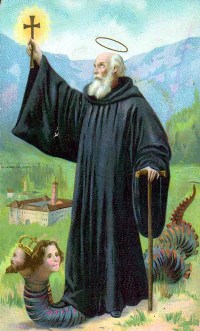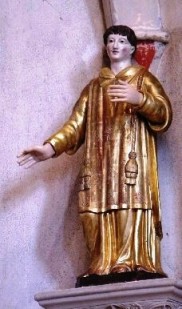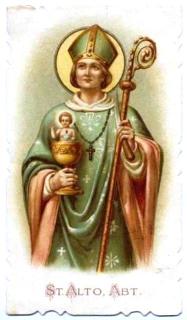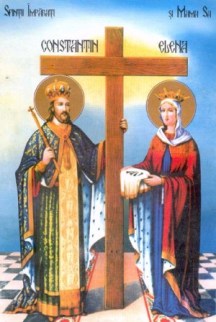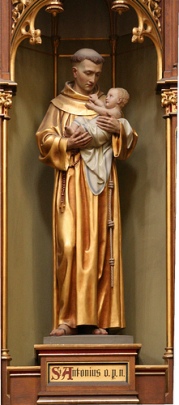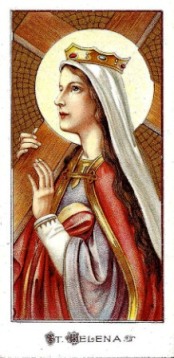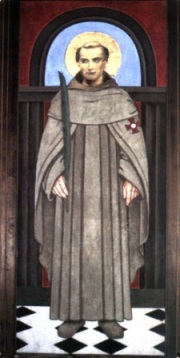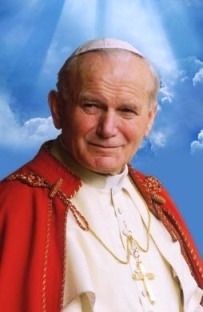
Personal Testimony.
The beatification of John Paul II is in memory of the Church and the world as the most exciting one ever, with features that make it truly unique. I want to record, interwoven with my personal experience, some peculiarities that might go unnoticed, or were not sufficiently detailed in the press. Perhaps many of them are secondary to the central event of the day, but certainly it contributed to a record a date without any precedent in the Church of Rome.
Vigil:
It is true that is traditional in the Church, local community it belongs to the son of God that will be raised to the altars, to organize a vigil of preparation the night before the event. But it is rare that such vigilance like this one gets the character of universal, official endorsement and participation of towering authorities of the holy site, to the point that the Vicar of His Holiness for the diocese of Rome, Cardinal Agostino Vallini was the one who presided.
The vigil, which was played the famous Circus Maximus, was structured in two parts, during which they alternated different choirs, as Gaudium Poloniae, who performed emotional songs:
1 - The celebration of memory, which is projected short videos of the life of Pope Wojtyla, was a procession with candles, with the participation of young people in the parishes. They lit lamps in front of the venerable icon of Mary, Salus Populi Romani, enthroned on the stage, along with a beautiful image of John Paul II. In this part, we had the presence and testimony of those who knew more deeply beloved Pope, and who experienced the power of his intercession. I refer to Dr. Joaquín Navarro Valls, Vatican spokesman during much of the pontificate of John Paul II. He also gave his testimony of Sister Marie Simon-Pierre, blessed with the miraculous cure of Parkinson suffering, through the intervention of Blessed Pope Polish. Finally, we heard the voice of the dear Cardinal Stanislaw Dziwisz, personal secretary to John Paul II for almost forty years.
2 - The second part, centered on prayer, paid tribute to the great Pope by praying the Luminous Mysteries of the Rosary, which he himself introduced. The pious exercise held in connection with five shrines, each of whom read a mystery, asking for an intention:
Sanctuary of Saint Mary of Lagniewuniki, in Krakow, he prayed for the young.
Sanctuary of Our Lady of Kawekamo-Bugando, Tanzania, prayed for the family.
Sanctuary of Our Lady of Lebanon, Harissa, for evangelization.
Sanctuary of Our Lady of Guadalupe, Mexico, hope and peace of nations.
Sanctuary of Our Lady of Fatima in Portugal, prayed for the Church.
In conclusion, we had the blessing of Pope Benedict, via a live video from his papal apartment. Meanwhile, many parishes are preparing for the "White Night", as it was called the vigil of Eucharistic adoration to which they invited.
............
Beatification.
And get to the awaited and memorable day of the Beatification. The bus that was carrying us left us near the Castel St Angelo. The number of people was impressive. Many had spent the night there, as they were already occupied all the places near the route of conciliation, she was completely "covered" by people, let alone in the plaza of San Pedro. Big screens were placed at strategic locations in the city. The vast majority of pilgrims were content only, realistically, to be located in a place from which they could see well the transmission by these screens.
I tried to move as I could, and came with great difficulty to the Way of the Settlement. In the meantime, had already begun the "Preparation for the celebration, which consists of a set of prayers, reflections and songs in different languages, that predispose us to a fruitful conclusion spiritually. With this objective, sang in different languages, the Chaplet of Divine Mercy, revealed by Jesus himself to the Polish nun St. Faustina. It was very significant that perform this pious act, it was the Sunday of Divine Mercy, instituted by Pope John Paul II, and before which he had been called to the Father’s House. The life and ministry of the unforgettable Polish Pope, were always associated with devotion to the Merciful Jesus. He himself was who canonized Faustina Kowalska in the Holy Year 2000, by establishing the Celebration.
In this preparation also read excerpts from homilies of John Paul II, in which he referred to the Divine Mercy. When are the song of the chaplet, I kept moving slowly, by the Way of the Settlement. It was extremely difficult. I’ve never seen so many people. When I got the leg of the route that precedes the Saint Peter Square, I could not go further.
At that time, the notes of the organ which played the melody of the illustrious "Tu es Petrus", by Palestrina. What was my astonishment when I remembered a few days ago, had chosen to insert the same topic in a simple power point I did as a tribute to John Paul II.
After the entrance procession began, more solemn and moving, at the end of which, to an incomparable applause, venerated from the heart, and with filial love, the beloved Pope Benedict, who with his face visibly moved and happy, that closed procession, imparting the desired apostolic blessing, a treasure reserved for the Roman Pontiffs.
From the central balcony of St. Peter saw a white cloth that covered the tapestry of the future blessed. The same balcony from which John Paul and Benedict had intended mankind its first words as Successor of Peter, and had given his first solemn blessing. The balcony from which so many Christmas and Easter had delivered the traditional Urbi et Orbi message. Few know that the Popes only peer through the balcony when elected, and the two holiest days of the year, at Easter and Christmas.
The Mass began as usual. After the Kyries, began the Rite of Beatification, by formal request made by Cardinal Agostino Vallini, Vicar of His Holiness for the diocese of Rome, who prayed to the Holy Father if you could include his beloved predecessor in the catalog of Blessed. The cardinal read a brief biography of the beloved Pope, interrupted by applause from the faithful.
Then, Benedict XVI pronounced the formula of beatification, the end of which, before the clamor enthusiast crowd, tears of excitement, applause and praises to the Blessed, witnessed the discovery of the tapestry, he haloed his face wore a joyful and John Paul II’s youth. Personally, I think it was the most emotional moment of celebration. I could not believe that this blessed hands which had the grace to kiss, then they gave me Communion, was being officially elevated to the altar by my always beloved Mother Church.
Then, two nuns, one of them, Polish, who had always served his illustrious compatriot, and the other, Marie Simon-Pierre, favored by blessed with the miracle of curing Parkinson’s, presented the relics to the Holy Father. These are two small tubes with the blood of John Paul II, placed in a beautiful shrine, which in some of its details, seems to play inside features the Shrine of Divine Mercy Polish.
After being enthroned relics, sang the hymn Gloria in excelsis. Then he delivered the opening prayer typical of Mercy Sunday, the Octave of Easter. He began the Liturgy of the Word. The first reading was read in Polish, the psalm was sung in Latin, the second reading was read in English and the Gospel was proclaimed in Latin. After the Pope delivered his homily in which he referred to the internationally recognized sanctity of John Paul II.
Later he prayed the prayer of the faithful in various languages, a feature that few noticed: the petitions were drafted from the Latin words which gave name to the major encyclicals of the new Blessed. The Official Book of the celebration, these words are in italics.
In the Eucharistic Liturgy, the procession of offerings opened a boy and a young Polish significantly excited, who with their typical clothing, reverently approached the Holy Father. I have to say here, and allow me this digression, which the Polish presence in all these days, and above all it was admirable. The devotion of these people, their loyalty and love for the Church, they are truly unparalleled. I do not remember having seen any corner of the Plaza, or the Vatican or the Holy City itself, from which not see a flag fluttering alongside the Polish pope in the hands of groups of pilgrims from all ages and civil and social. Salve, Poland, daughter most faithful of the Church and the Popes!
Then, with a fervor worthy of note, the Mass continued as usual until the end, when the Holy Father, Prayer before Easter antiphon Regina Caeli, spoke a few words of greeting and gratitude in different languages to all present, starting with religious and civil authorities.
After the solemn blessing, sang the official anthem of the new Blessed. At the conclusion of Mass, very long lines waited to venerate the relic (and is called the chest containing the remains of Blessed) John Paul II, placed before the Altar of the Confession of St. Peter’s Basilica in the Vatican. It was a grace of God shed tears of emotion at the same chest that made me sad shed them six years ago, when witnessed on television the funeral that made me realize that never again see on this Earth to Papa Pilgrim, my father, teacher and friend.
AN UNEXPECTED MEETING:
And to conclude this story, I want to share one more experience, very personal, I can not but consider another grace of God. After being in Rome, I visited other parts of Italy, the last of which was Milan. When the last day I was at the Milan airport, waiting for the flight to take me to Rome, and from there back to Argentina, I saw a priest, whom I recognized as such by its cleryman. I asked him please to bless some sacred objects that had me as a souvenir of the beatification. I said yes. He was Italian but spoke good Spanish.
When I was plotting the blessing I saw that his episcopal ring, and I realized I also had pectoral cross. Then I said. "But you are a bishop". I said yes, and had been in Argentina in 1987, when John Paul II came to this country. I told him that reminded me of Piero Marini, for their strong resemblance. Monsignor Piero Marini served as Master of Papal Liturgical Ceremonies of John Paul II. Polish Pontiff accompanied each of his travels around the world, and was beside him at every liturgical celebration. I always admired him because it seemed the guardian angel of Blessed Pope, especially in his later years of life on earth.
The fact is that the bishop replied, smiling: "Yes, I do look like him". And he showed me his identification. IT WAS H IM! PIERO MARINI IN PERSON! And I without knowing, asked him to bless those memories. I asked an autograph, the Book of beatification that I got. I was thrilled to recognize that firm that I had so often seen at the foot of official liturgical documents. And then I took a picture with him. It was an unforgettable experience.
I conclude this report by thanking the Almighty for granting me the gift of being at the point that I love in the planet the most , the Plaza of Saint Peter, participating in the beatification of the person I love the most, John Paul II, presided over by the person who I admire the most on the world, Benedict XVI.
Deserve nothing, what more I can ask?
Rodolfo Roberto Reynoso.
(translated by Marco Antonio Rodríguez Ruvalcaba)
Thanks, Rodolfo, for your invaluable testimony, told with such precision and emotion, it feels like we were there. Serve so that others who have been present or have lived especially from home, send to us all his own testimony.
Ramon
